What does the common buzzard look like? How can you recognize a fledgling buzzard? Where does the bird build its nest and when is the breeding season? We provide this and much more worth knowing information in our species portrait.
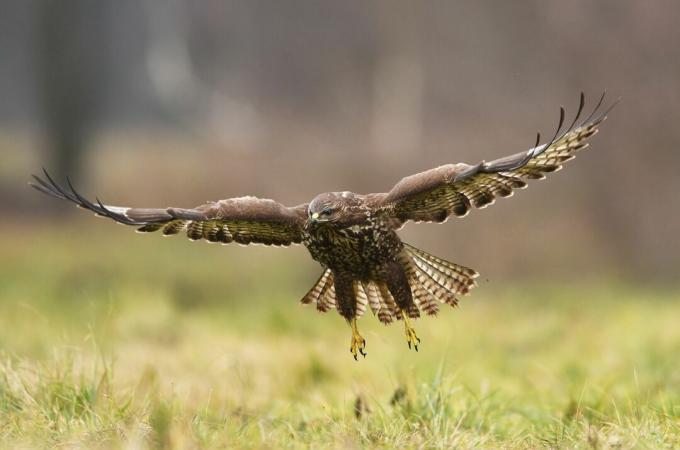
The common buzzard (Buteo buteo) is our most common native bird of prey. The imposing hunters can often be seen circling high in the air or perched on fences and steles in fields. Even right next to the road or highway, the buzzards perch on crash barriers and posts to keep an eye out for prey. Exactly what the birds of prey prefer to hunt, how to recognize their distinctive call and all that If you need to know anything else about buzzards, you can find out more here in our detailed profile.
"Contents"
- Common Buzzard: Wanted Poster
-
How to recognize the common buzzard
- How do buzzards differ between males and females?
- How does the buzzard call sound?
- How do you recognize a buzzard fledgling?
- What do buzzard eggs look like?
- Which habitat does the common buzzard prefer?
- Where does the common buzzard build its nest?
- When is the buzzard breeding season?
- Where does the common buzzard spend the winter?
- What do common buzzards eat?
Common Buzzard: Wanted Poster
| size | 48-56 cm |
| Weight | 800 – 1000 g (females or Male) |
| breeding season | March April |
| lifespan | Up to 26 years |
| habitat | Semi-open landscapes, parks and cemeteries |
| feed preference | Small animals such as field mice, lizards or frogs |
| threats | Decline in food and habitat, wind turbines |
How to recognize the common buzzard
The common buzzard is a compact bird of prey that can reach a length of 56 cm and a wingspan of 130 cm. Its strong, curved beak and large prehensile feet are yellow; the tip of the beak and the claws, however, are colored in contrasting black. The plumage of the common buzzard is usually patterned grey-brown and has white feathers in varying proportions. So, in addition to very dark individuals, there are also those that are almost pure white.
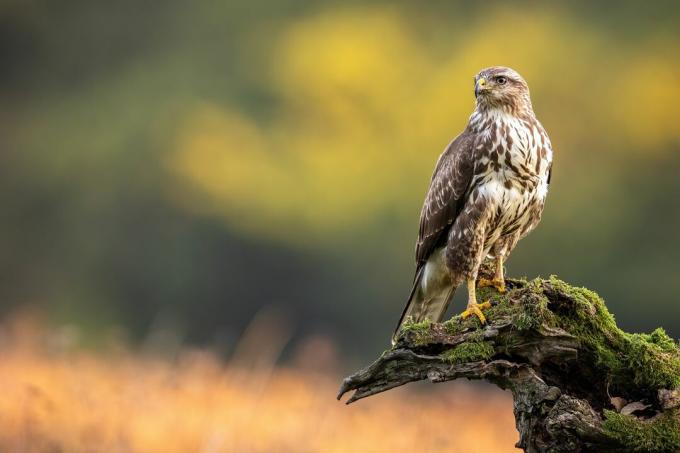
From a distance, buzzards can also be recognized by their flight pattern. Mostly circling over the landscape, the birds are distinguished by their rounded tails and broad, rounded wings.
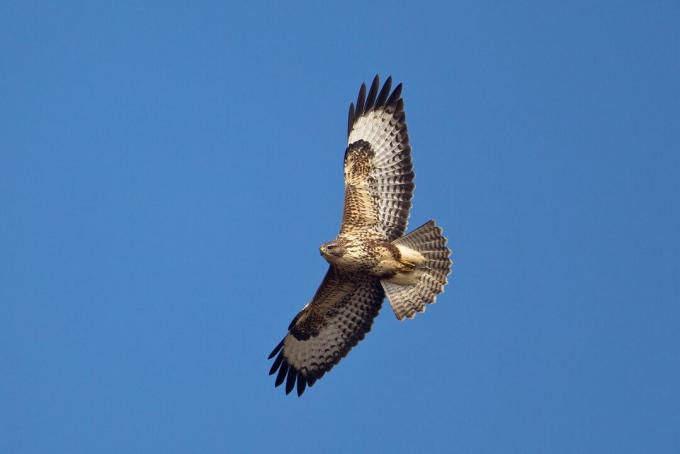
How do buzzards differ between males and females?
Female and male common buzzards do not differ specifically in their plumage coloration. As a rule, however, female animals are slightly larger and heavier than their male companions. However, this distinction is very difficult to make simply by observing the animals.
How does the buzzard call sound?
Common buzzards like to draw attention to themselves with their characteristic call. This consists of a stretched, pitch-sloping "pijaah," somewhat reminiscent of a cat's meow.
You can find out what the buzzard's call sounds like here:
How do you recognize a buzzard fledgling?
As soon as young common buzzards leave the nest, they already look quite similar to their parents. However, a typical feature of the young birds is the lack of a black rear edge that lines the undersides of the wings and tail of the adult animals.
What do buzzard eggs look like?
The eggs of the common buzzard are about 5.5 cm in size, have a whitish base color and are sometimes covered with a few fine brown speckles. A female usually lays between two and three eggs per nest.

Which habitat does the common buzzard prefer?
The buzzard prefers half-open landscapes with open meadows, fields or heaths and adjacent vegetation rich in structure. Smaller patches of forest surrounded by open land are particularly popular. But the common buzzard has also spread to settlements and cities, where it breeds in tall trees in parks or cemeteries.
Where does the common buzzard build its nest?
The common buzzard builds its nest in the forked branch of a tall, stable tree. Coniferous and deciduous trees are used equally for this purpose. The nest is built at a height of up to 25 meters from large and small twigs and covered with leaves. Nests from previous years are often reused and only supplemented with even more nesting material.
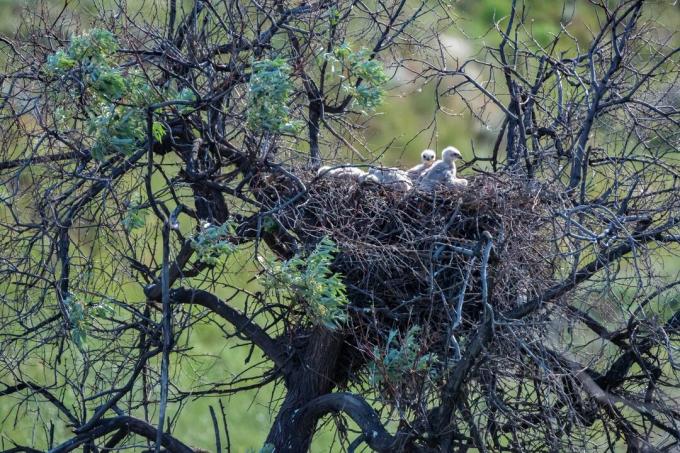
When is the buzzard breeding season?
Female buzzards lay their eggs between March and April and incubate them for up to 35 days. The young birds then hatch and are fed by their parents in the nest. After 40 to 50 days, the young common buzzards finally reach their full weight and make their first attempts to fly. However, at first they remain close to the nest and are supplied with food by the adult birds. After another ten weeks at the latest, the young animals are finally independent and leave their parents' territory.
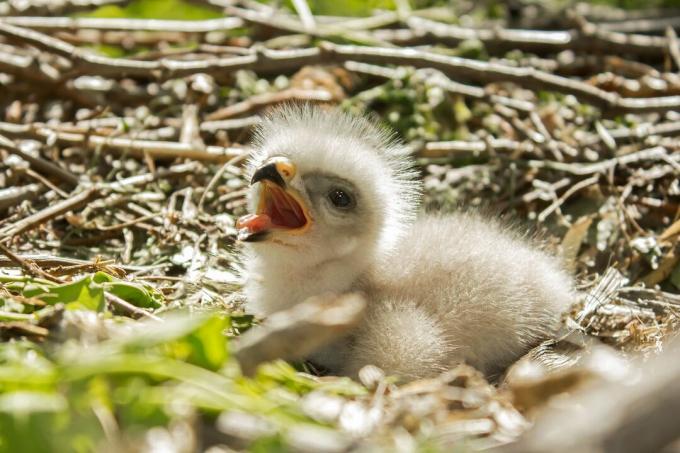
Where does the common buzzard spend the winter?
Our native buzzards are predominant sedentary birds. They spend the whole year in their breeding grounds and find food even under thick layers of snow. Conspecifics from more northern parts of Europe, on the other hand, leave their breeding grounds in winter to escape the harsh winters and are then happy to be our guests.

What do common buzzards eat?
The food of the common buzzard consists mainly of field mice. But other small animals such as lizards, frogs, smaller songbirds or worms are also on the menu of the birds of prey. Common buzzards often circle high above fields and meadows in search of prey. But even sitting on steles or fences, they have a full view of what is happening and are always ready to strike.
Another bird of prey that can often be observed over fields and meadows is the kestrel. Get to know this wild bird a little better in our profile.
...and receive concentrated plant knowledge and inspiration directly in your e-mail inbox every Sunday!
